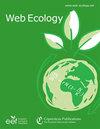幻影蠓在英国的出现时间和毒性
IF 2.4
3区 环境科学与生态学
Q2 ECOLOGY
引用次数: 0
摘要
潮蠓(双翅目:潮蠓科)幼虫对杀虫剂敏感,是植保产品环境风险评价的重要分类。为了帮助建立人群对外源暴露的反应模型,需要有关出现时间和毒性的信息,但文献中缺乏支持这些参数的明确证据。在2017年春夏两季进行了两个独立的室外网眼封闭微观实验,研究了超圆蛾越冬幼虫的出现时间和每年发生的生命周期数量。4月13日开始产卵,5月2日达到高峰,以暗纹夜蛾为主(99.68%)。大部分应急工作在6月3日之前完成。羽化成功率在51.4% ~ 66.2%之间,表明越冬夜蛾幼虫在春季同时羽化,而不是在春夏两季零星羽化。在春夏两季,结晶夜蛾幼虫可产生多达4代(即证实为多伏特),其生命周期(卵到卵)为14至56 d。本研究中观察到的生命周期策略的差异,对评估由于杀虫剂暴露或其他压力因素而受到局部影响的潮蛛种群恢复能力具有重要意义。本文章由计算机程序翻译,如有差异,请以英文原文为准。
Emergence timing and voltinism of phantom midges, Chaoborus spp., in the UK
Phantom midges, Chaoborus spp. (Diptera: Chaoboridae), are an
important taxon in environmental risk assessment of plant protection products due to the sensitivity of their larvae to insecticides. To aid
modelling of population responses to xenobiotic exposure, information on
emergence timing and voltinism is needed, but definitive evidence to support
these parameters is lacking in the literature. We investigated emergence
timing of overwintering Chaoborus larvae and the number of life cycles occurring per year in two separate, mesh-enclosed outdoor microcosm experiments in the spring and summer of 2017.Emergence from overwintering larvae of a population of predominantly C. obscuripes (99.68 %) commenced on 13 April and peaked on 2 May. The majority of emergence was completed by 3 June. Emergence success ranged from 51.4 % to 66.2 %, indicating that for overwintered C. obscuripes larvae, adults emerged contemporaneously in spring, rather than sporadically over the course of spring and summer.A population of C. crystallinus larvae produced up to four discrete generations over the spring and summer months (i.e. were confirmed to be multivoltine), with life cycle durations (egg-to-egg) ranging from 14 to 56 d. The differences in life cycle strategy observed in this study have implications for assessment of the capacity of populations of Chaoborus spp. to recover if there are localised impacts due to insecticide exposure or other stressors.
求助全文
通过发布文献求助,成功后即可免费获取论文全文。
去求助
来源期刊

Web Ecology
Agricultural and Biological Sciences-Ecology, Evolution, Behavior and Systematics
CiteScore
4.60
自引率
0.00%
发文量
6
审稿时长
17 weeks
期刊介绍:
Web Ecology (WE) is an open-access journal issued by the European Ecological Federation (EEF) representing the ecological societies within Europe and associated members. Its special value is to serve as a publication forum for national ecological societies that do not maintain their own society journal. Web Ecology publishes papers from all fields of ecology without any geographic restriction. It is a forum to communicate results of experimental, theoretical, and descriptive studies of general interest to an international audience. Original contributions, short communications, and reviews on ecological research on all kinds of organisms and ecosystems are welcome as well as papers that express emerging ideas and concepts with a sound scientific background.
 求助内容:
求助内容: 应助结果提醒方式:
应助结果提醒方式:


